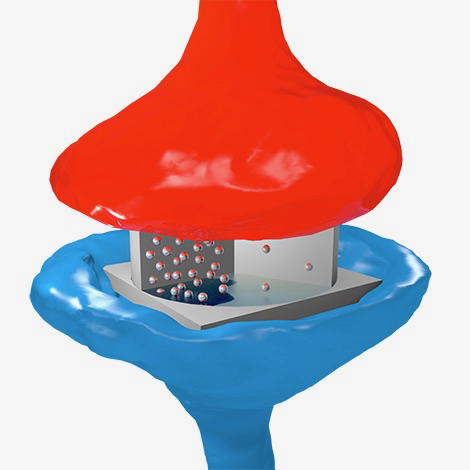The first autonomous artificial synapse is born at French CNRS

It’s a French first on an international scale: a team at CNRS (National Center for Scientific Research) has developed the first physical model of an artifical synapse—in other words, the beginning of an autonomous artificial intelligence. Published on April 3 in the U.S. scientific journal Nature Communications, the research by the Unité mixte de physique CNRS/Thales directed by Vincent Garcia describes the creation of an artificial synapse, “an electronic nanocomponent that consists of a thin ferroelectric layer sandwiched between two electrodes”. The study reproduces the impact of the synapses, which connect the neurons, in the learning process. The more the synapses are stimulated, the stronger the connections between neurons, which makes learning easier.
“This discovery opens the way to creating a network of synapses and hence intelligent systems requiring less time and energy,” CNRS states in a press release. The electronic chip operates based on the memristor (portmanteau of memory and resistor), an electronic component that was long considered fictitious, envisioned by circuit theorist Leon Chua in 1971 but that only saw the light in 2008, thanks to semi-conductor research by HP Labs. The memristor’s resistance can be tuned using voltage pulses similar to those in neurons.
The applications of this discovery are numerous (reducing transistor size, instantly booting up computers, etc.), but research on the bionic brain is the most promising. The artificial synapse modelized by CNRS will be part of a European research program related to real-time video processing, such as footage shot by the cameras of an autonomous car. By reacting faster and saving resources, instead of processing all the images, the synaptic network will learn to recognize more or less significant changes.
Read more in the article published in Nature Communications
